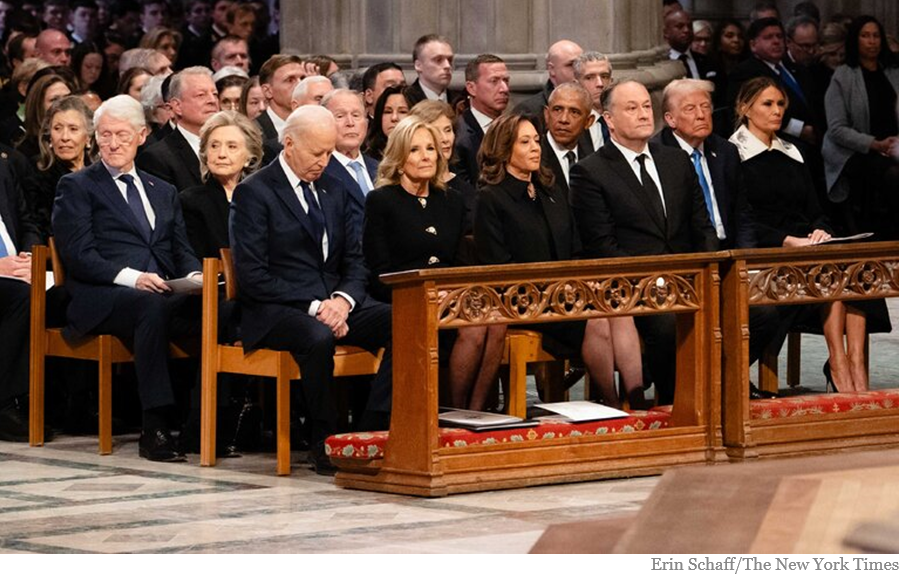
11 Jan Ancestors- Newsletter- January 11, 2025
Contents
- 1 ANCESTOR- “IT’S LIKE MAKING YOUR EX D.J. YOUR WEDDING,” JIMMY KIMMEL SAID OF KAMALA HARRIS PRESIDING OVER THE CERTIFICATION OF TRUMP’S WIN”
- 2 ANCESTOR- THOSE FROZEN CONFLICT ZONES
- 3 ANCESTOR- WHERE IN THE CHUNNEL DO YOU SWITCH SIDES OF THE ROAD?
- 4 ANCESTOR- THE SPIRIT OF OMAHA
- 5 ANCESTOR- SO, WHAT’S THE REAL STORY- PART IV
- 6 ANCESTOR- GREY GARDENS AND JACKIE KENNEDY’S COUSINS
- 7 ANCESTOR- GEORGE’S OF WACO
- 8 ANCESTOR- HOW WELL DID EACH PRESIDENT LEVERAGE THEIR JOB INTO GREATER WEALTH?
- 9 ANCESTOR- WHAT ABOUT YOUR DESCENDANTS KNOWING ABOUT YOUR ANCESTORS?
 ANCESTOR- “IT’S LIKE MAKING YOUR EX D.J. YOUR WEDDING,” JIMMY KIMMEL SAID OF KAMALA HARRIS PRESIDING OVER THE CERTIFICATION OF TRUMP’S WIN”
ANCESTOR- “IT’S LIKE MAKING YOUR EX D.J. YOUR WEDDING,” JIMMY KIMMEL SAID OF KAMALA HARRIS PRESIDING OVER THE CERTIFICATION OF TRUMP’S WIN”
There had to be some awkwardness at Carter’s funeral with the seating arrangements (above).
However, as Kimmel pointed out, lots of attention was given to the awkwardness of Vice President (VP) and former presidential candidate Harris’s role as VP in certifying the election results, where she formalized her loss.
How many times has this happened in the past? Seven times, the first time was perhaps the oddest:
VP John C. Breckenridge, whom we wrote about in November (pictured) , and was the cousin of William Campbell Breckenridge, who we wrote about in the last edition had a poor relationship with President Buchanan. They only met twice in four years, and Buchanan tried to steer him to an ambassadorship.
By January 1859, friends knew Breckinridge desired the U.S. Senate seat of John J. Crittenden, whose term expired on March 3, 1861. The KY General Assembly would elect Crittenden’s successor in late 1859, so Breckinridge’s election would not affect any presidential aspirations he might harbor.
VP Breckenridge was elected to the seat on December 12, 1859, far in advance of the term, but was not to be seated until March 4, 1861. On June 23, 1860, Breckenridge was nominated for president by the southern branch of the Democrats. So, if he had prevailed in the 1860 election, he could have chosen to be president or senator as of March 4th. It’s always good to have back-up options!
Breckinridge returned to Washington in early 1861 to conclude his duties as vice president and take up his Senate seat. His home state of Kentucky remained in the Union. On February 13, Breckinridge, acting as president of the Senate, announced the results of the election: “Abraham Lincoln, of Illinois, having received a majority of the whole number of electoral votes, is elected President.”
Breckenridge’s second Senate career term was short when he was kicked out of the Senate on December 4, 1861, for enlisting in the Confederate Army. He eventually became a Major General and Secretary of War for the Confederacy.
The next VP, who had to announce that his competitor had prevailed, was 100 years later when Nixon certified John F. Kennedy. Nixon reversed the awkwardness in 1969 when VP Hubert Humphrey certified Nixon. Then, 12 years later, in 1981, VP Walter Mondale certified George H.W. Bush, who four years later certified Bill Clinton. Eight years later, George got his satisfaction when he saw Al Gore certifying his son, George W. Bush.
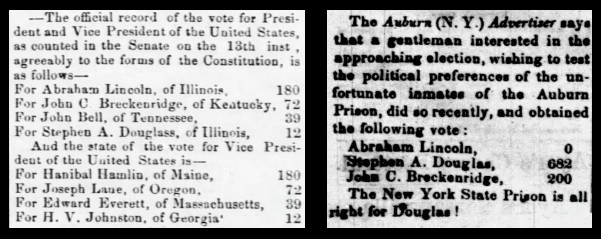
 ANCESTOR- THOSE FROZEN CONFLICT ZONES
ANCESTOR- THOSE FROZEN CONFLICT ZONES
I saw an article the other day stating that the factories in Transnistria would shut down because Ukraine had not renewed an agreement to transport Russian gas across its territory.
Well, I had never heard of Transnistria. I found out it is a “frozen conflict zone” left over from the Cold War (the Berlin Wall fell in 1989).
Here’s a better explanation and a map of these frozen-conflict places.
Through arms trade, financial resource assistance, and war, Russia establishes itself as a power that maintains control in its region.
However, complete stability continues to escape the Kremlin due to frozen conflict zones and intra-state regions struggling to attain independence. Formed after the dissolution of the Union of Soviet Socialist Republics (USSR), frozen conflict zones endured in an atmosphere that eschewed direct war but lacked peace. These areas include Transnistria, Abkhazia, South Ossetia, and Nagorno-Karabakh.
Russia challenges the sovereignty of Moldova, Georgia, Armenia, and Azerbaijan, respectively. Russian power in these areas remains primarily unchallenged by the international community. This is explained by Russia’s dominance within the Intergovernmental Organization (IGO) network. Although Transnistria, Abkhazia, and South Ossetia remain concretely within Moscow’s grip, Turkey, Iran, and Georgia continue to combat Russian ambitions in Nagorno-Karabakh.
 ANCESTOR- WHERE IN THE CHUNNEL DO YOU SWITCH SIDES OF THE ROAD?
ANCESTOR- WHERE IN THE CHUNNEL DO YOU SWITCH SIDES OF THE ROAD?
We know the British drive on the left and the French drive on the right, which is the correct side of the road. Do you switch over in the middle to driving on the other side of the road?
I asked this question when we visited the UK, as while we didn’t plan to drive to France, the question came to mind. A surprising number of stay-at-home British people didn’t know the answer, and when I came back to America, no one seemed to know.
Well, the answer is you don’t drive through the Chunnel at all. Your vehicle is put on the largest railcars in the world, and you travel as though you were on an under-the-seabed ferry. So now you have your bar trivia question!
Not that many RHD (drives on the right, driver’s seat on the left) countries have land borders with LHD (drives on the left, driver’s seat on the right) countries. Most of the LHD countries I can think of are islands that end at the water’s edge: the UK, Australia, Jamaica, Japan, Cypress, Malta, Singapore, Caymans, and Falklands.
The only LHD countries sharing borders are India, Malaysia, Thailand, and a handful of countries in South and Southeast Africa. LHD Thailand shares a border with RHD Burma and Vietnam.
Generally, you will find a crisscross overpass at the land border and at ferry landings, where you cross water and change drive sides. It’s kind of a mess to untwist.
Years ago, I read of a study that compared the death rate due to driving collisions in the left vs. right-sided driving countries. The left rate was higher because most people are right-handed. When you panic as you are about to be in an accident, your dominant hand tries to pull you away from the accident, so in a left-side driving country, that takes you into a deadly head-on collision. It’s not my area of expertise, but it makes sense.

 ANCESTOR- THE SPIRIT OF OMAHA
ANCESTOR- THE SPIRIT OF OMAHA
My wife’s uncle Bill (1918-2010) told me that he remembers his dad (the donut shop entrepreneur in our last edition Harvey’s Donuts) taking him to an airfield in San Diego as a kid to discuss investing in a plane. He met the pilot Charles Lindbergh and a backer from St. Louis there. This would have been about 1927, making Bill nine years old.
Here’s an excerpt about the Spirit of St. Louis flight, the first to cross the Atlantic piloted by Charles Lindbergh:
Financing the historic flight was challenging due to Lindbergh’s obscurity, but two St. Louis businessmen eventually obtained a $15,000 bank loan. Lindbergh contributed $2,000 of his own money from his salary as an airmail pilot, and Ryan Airline Company donated another $1,000. The total of $18,000 was far less than what was available to Lindbergh’s rivals.
The group tried to buy an “off-the-peg” single or multiengine monoplane from Wright Aeronautical (as in Wright Brothers). Travel Air, and finally, the newly formed Columbia Aircraft Corporation, but all insisted on selecting the pilot as a condition of sale. Finally, the much smaller Ryan Airline Company (later called the Ryan Aeronautical Company) of San Diego agreed to design and build a custom monoplane for $10,580.
On February 25, 1927, a deal was formally closed. Dubbed the Spirit of St. Louis, the fabric-covered, single-seat, single-engine high-wing monoplane was designed jointly by Lindbergh and Ryan’s chief engineer, Donald A. Hall. The Spirit flew for the first time just two months later, and after a series of test flights, Lindbergh took off from San Diego on May 10. He went first to St. Louis and then to Roosevelt Field on New York’s Long Island.
His father chose not to invest. Later, when Uncle Bill married, it was to the daughter of the former Nebraska Secretary of State, Harry Swanson. Harry is pictured at Golden Spike days at the Nebraska State Capitol in April 1938. He was in costume, with a cream-colored Stetson and his signature mustache. He‘s rolled his cigarette.
Bill told me he remembered seeing a newspaper passed down in the Swanson family where the Spirit of St. Louis landed in Omaha, not St. Louis. I believe that instead he remembered this picture from a promotional trip three months later.
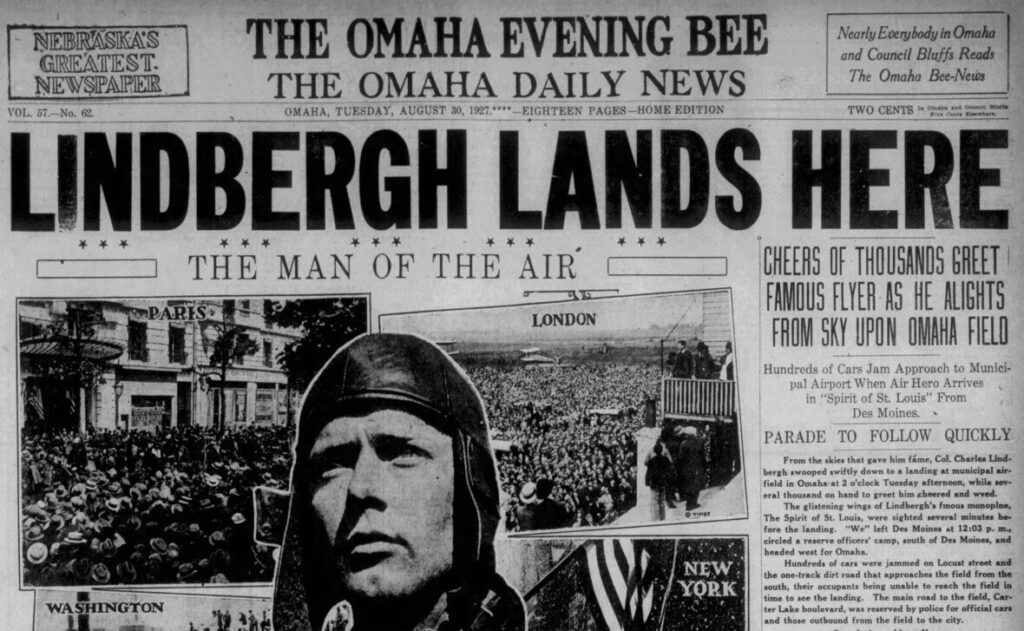
 ANCESTOR- SO, WHAT’S THE REAL STORY- PART IV
ANCESTOR- SO, WHAT’S THE REAL STORY- PART IV
Continuing with Henry Smith-
Here’s the legend:
Henry married a daughter of the Sears family of Sears and Roebuck fame at a young age. Henry’s parents were friends with the Sears family. This was much to the dismay of the Sears family, as Henry was viewed as a rebel. Henry and the Sears daughter had a baby girl. When the girl was 8 months old, his wife was kicked in the head by a polo pony and killed. The Sears family took the baby to Europe to raise her as they did not deem Henry fit to raise the child alone. After that, Henry sailed away, serving on ships as a ship’s cook worldwide for the next 20 years”.
Henry never knew what had happened to his baby daughter, but he always kept a silver pocket watch with baby teeth marks, which came from when he let her chew on it.
Here’s the story:
Henry was born in 1872, so if he married at a young age, a Sears heir from the Sears and Roebuck department store fame, it wouldn’t have been possible as Sears didn’t start to produce wealth until the turn of the century and the founder of Sears, Richard Warren Sears’ daughters weren’t even born until 1896 and 1900 and lived until 1968 and 1942.
I also checked the Roebuck family. They never had any money and sold out early.
A polo-playing Sears heir would likely be a descendant of the Boston “Brahmin” Sears family, whose fortune was more tied to Boston real estate. The family did have a famous female West Coast polo-playing member, Eleonora Randolph Sears (more on her below, where she is pictured in a painting by John Singer Sargent, the leading portrait painter of his generation), who lived until 1968 and never married.
Henry attended his sister Mary’s wedding in Bakersfield in 1892 and was in Bakersfield for a trip to Mt. Breckenridge on May 15, 1894. On September 24, 1894, and July 9, 1896, he registered to vote in Bakersfield. So, from 1892 to 1896 (ages 20-24), his prime years for marriage, he seems to have planned to permanently live in Bakersfield, as why else would one register to vote?
It turns out that Henry married at age 24, 21-year-old Maud Irene Dumble on March 13, 1896, in Bakersfield. Maud was born September 24, 1874, in White River, Tulare, CA. Maud was the daughter of Ephraim Hebert and Drucilla Skiles Dumble of Havilah, Kern, CA.
Ephraim Dumble was a pioneer of the 1850s in California who, after crossing the plains with wagons and oxen, engaged in mining in the Sierras and along the Kern River. For some years, he operated a general store at Havilah. Still, later, he engaged in the mercantile business in Los Angeles, returning to Kern County about 1874 and settling at Bakersfield. He died in 1901.
Henry and Maud moved to San Francisco, and their daughter Maria Anita was born 10 months later. Maud died on January 13, 1899, in San Francisco from an illness that had lingered for several months and required surgery. She was buried in Bakersfield at the Union Cemetery. Their daughter Anita was almost two years old by then.
I found the record of Anita living with her Dumble grandparents and uncle in Bakersfield at age three and again living in Bakersfield with an uncle at age 13. The child was not likely taken from Henry and sent off to Europe. The only similarities in the legend to the reality are that Dumble was a merchant like Sears, his wife had a baby girl, and the wife died young.
According to the story I shared in the last edition The Voyage of the Kwanza and other stories, Henry would have been at sea from 1889 to mid-1892 and then again from mid-1899 to 1909. So, he would have been able to progress Anita’s situation if he had desired, as she was in Bakersfield, CA, at least until 1910.
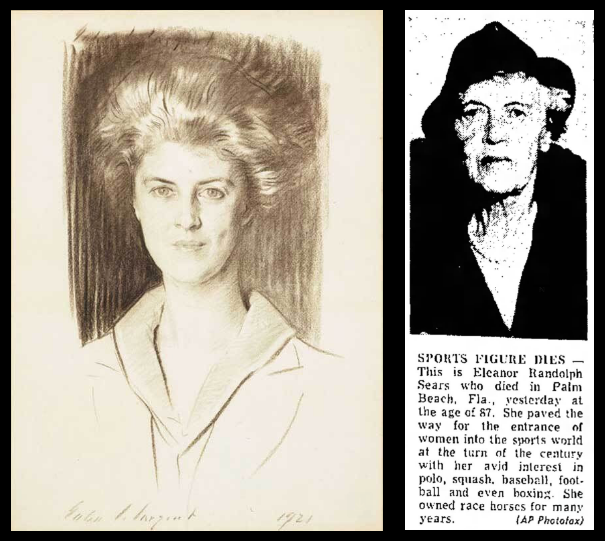
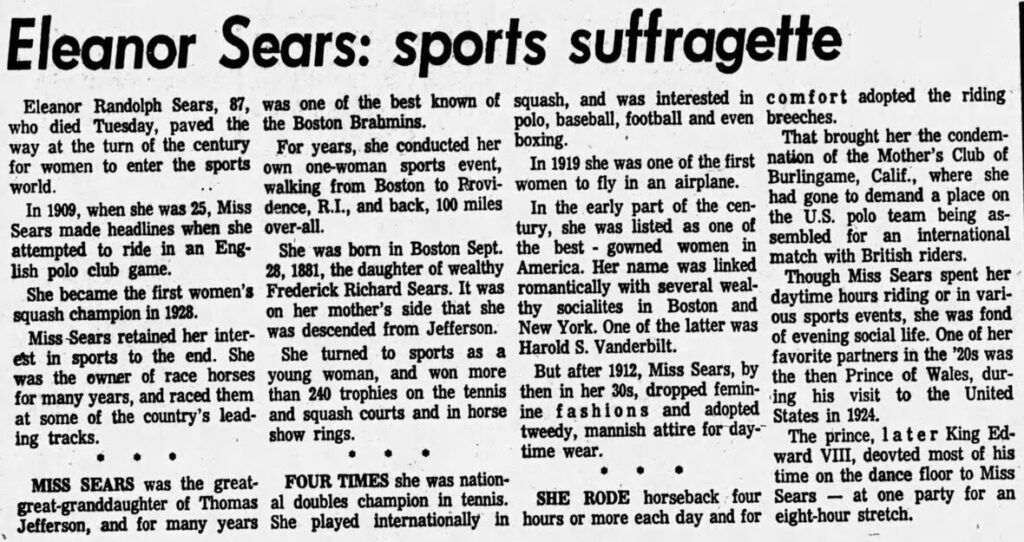
 ANCESTOR- GREY GARDENS AND JACKIE KENNEDY’S COUSINS
ANCESTOR- GREY GARDENS AND JACKIE KENNEDY’S COUSINS
In the last edition, we covered Jackie’s cousin Bouvier Beale and his interaction with Grey Gardens.
In 1895, 4 acres of oceanfront land was bought by F. Stanhope Phillips and Margaret Bagg Phillips, daughter of John S. Bagg, who had acquired the Detroit Free Press in 1836. The Phillips paid $2,500 (equivalent to $92,000 in 2023) from the estate of Mr. Candy. The couple announced their plans to build a $100,000 (equivalent to $3,662,000 in 2023) house on the property. However, the purchase hit a snag when it was revealed that the property had been bequeathed to the U.S. government.
In 1897, Joseph Greenleaf Thorp (1862–1934) designed the house. Thorpe had created several other homes in East Hampton. However, the house was not immediately built. Stanhope Phillips died in 1901, leaving behind an estate valued at $250,000 (equivalent to $9,156,000 in 2023). His brother challenged Margaret for control of the estate, saying she had used undue influence on him and that she had cremated him so that an autopsy could not be performed to confirm this. The court sided with Margaret. After the ownership issues were settled, construction on the house started.
In 1913, Robert C. Hill, president of Consolidation Coal Company, bought the house. Hill’s wife, Anna Gilman Hill (1875–1955), imported ornate concrete walls from Spain to enclose the garden and hired landscape designer Ruth Bramley to create the core of Grey Gardens. Bramley married architect Aymar Embury II and their offices were in the same building.
In 1924, Phelan Beale acquired the estate for his wife, Edith Ewing Bouvier Beale.[6] Phelan was a law partner of John Vernou Bouvier Jr. and had married Bouvier’s daughter, Edith. Bouvier owned an estate in East Hampton, located three miles north on Further Lane at Lasata, where his granddaughter Jacqueline Bouvier Kennedy Onassis was a frequent visitor.
After an extended marital separation, Phelan Beale notified Edith of their divorce around 1946 by telegram from Mexico. Phelan provided Edith with an allowance of $300 (equivalent to $5,000 in 2023) per month to maintain the property, herself, and her daughter Edith Bouvier Beale, commonly known as “Little” Edie. Phelan’s financial support eventually ceased, and the two Ediths lost contact with him. The house and garden fell into disrepair and were overtaken by nature due to the lack of funds. The two women continued to inhabit the house, keeping many cats and wild animals.
In 1972, the Suffolk County, New York Health Commission issued a notice of eviction, stating the Beales would be unable to live in the house until it was cleaned and essential utilities restored. The news of the order and of the squalor in which the two women lived received international attention because “Big” and “Little” Edie (pictured) were the aunt and first cousin, respectively, of Jacqueline Kennedy, the widow of former US President John Fitzgerald Kennedy, and wife of Aristotle Onassis.
Jacqueline and her sister, Lee Radziwill, donated money to make the house habitable and restore it to a standard, allowing the eviction order to be revoked.
That same year, Radziwill asked brothers Albert and David Maysles to create a film, including interviews with the Edies, documenting the Bouvier family’s visits to East Hampton during Lee’s and Jacqueline’s youth. The project was ultimately canceled, and the Maysles turned their attention to the Beales, which resulted in the 1975 documentary Grey Gardens. After the film was released, Edith and Little Edie continued to reside in the house. Edith died in 1977, and Little Edie remained until she sold the property.
The original 1972 footage featuring Radziwill visiting the Beales was released in 2017 as That Summer.
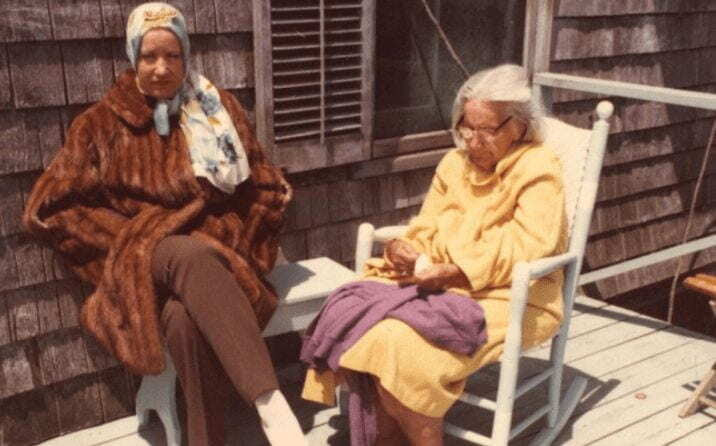
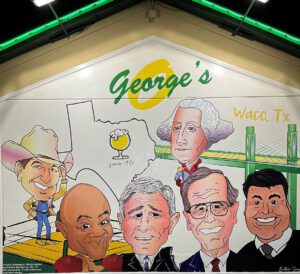
ANCESTOR- GEORGE’S OF WACO
Can you guess who the five George’s are in this picture?
If you’re a serious history student, you can guess which one didn’t eat here.
If you get stuck, hold this up to a mirror, and the non-George part of the name will be visible.
tiartsgnottnihsawreizarfhsubwhsubwhzepol
ANCESTOR- HOW WELL DID EACH PRESIDENT LEVERAGE THEIR JOB INTO GREATER WEALTH?
In the writings associated with Jimmy Carter’s passing, there were many comments about how others leveraged their presidential fame and connections to increase their net worth, but Carter did not. So, I thought I would check that out.
I only looked at the last 12 presidents as that is more the era of ex-presidents being in demand for giving speeches, writing books, and post-office promotion. Unfortunately, Kennedy did not have an after. Of course, ex-presidents could have sources of income beyond those mentioned.
Here is what I was able to come up with:
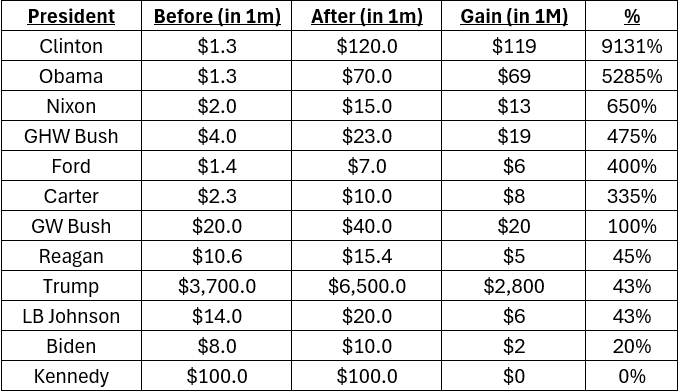
 ANCESTOR- WHAT ABOUT YOUR DESCENDANTS KNOWING ABOUT YOUR ANCESTORS?
ANCESTOR- WHAT ABOUT YOUR DESCENDANTS KNOWING ABOUT YOUR ANCESTORS?
Reach out to Dancestors Genealogy. Our genealogists will research, discover, and preserve your family history. No one is getting any younger, and stories disappear from memory every year and eventually from our potential ability to find them.
Preserve your legacy and the heritage of your ancestors.
Paper gets thrown in the trash; books survive!
Ready to embark on your family history journey? Don’t hesitate. Call us at 214-914-3598, and let’s get your project started!


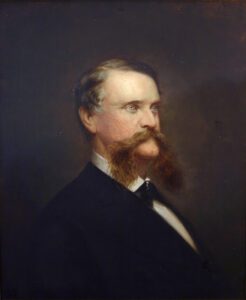 ANCESTOR- “IT’S LIKE MAKING YOUR EX D.J. YOUR WEDDING,” JIMMY KIMMEL SAID OF KAMALA HARRIS PRESIDING OVER THE CERTIFICATION OF TRUMP’S WIN”
ANCESTOR- “IT’S LIKE MAKING YOUR EX D.J. YOUR WEDDING,” JIMMY KIMMEL SAID OF KAMALA HARRIS PRESIDING OVER THE CERTIFICATION OF TRUMP’S WIN”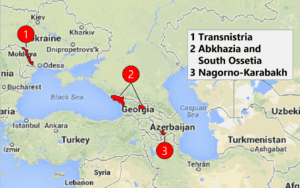 ANCESTOR- THOSE FROZEN CONFLICT ZONES
ANCESTOR- THOSE FROZEN CONFLICT ZONES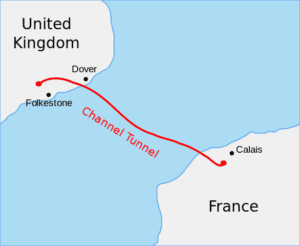 ANCESTOR- WHERE IN THE CHUNNEL DO YOU SWITCH SIDES OF THE ROAD?
ANCESTOR- WHERE IN THE CHUNNEL DO YOU SWITCH SIDES OF THE ROAD? ANCESTOR- THE SPIRIT OF OMAHA
ANCESTOR- THE SPIRIT OF OMAHA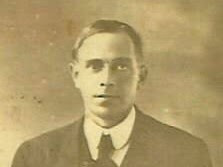 ANCESTOR- SO, WHAT’S THE REAL STORY- PART IV
ANCESTOR- SO, WHAT’S THE REAL STORY- PART IV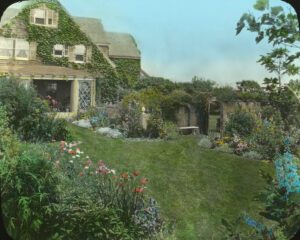 ANCESTOR- GREY GARDENS AND JACKIE KENNEDY’S COUSINS
ANCESTOR- GREY GARDENS AND JACKIE KENNEDY’S COUSINS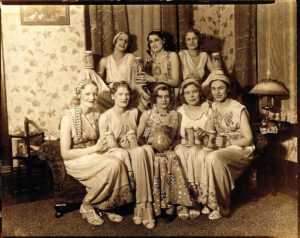 ANCESTOR- WHAT ABOUT YOUR DESCENDANTS KNOWING ABOUT YOUR ANCESTORS?
ANCESTOR- WHAT ABOUT YOUR DESCENDANTS KNOWING ABOUT YOUR ANCESTORS?